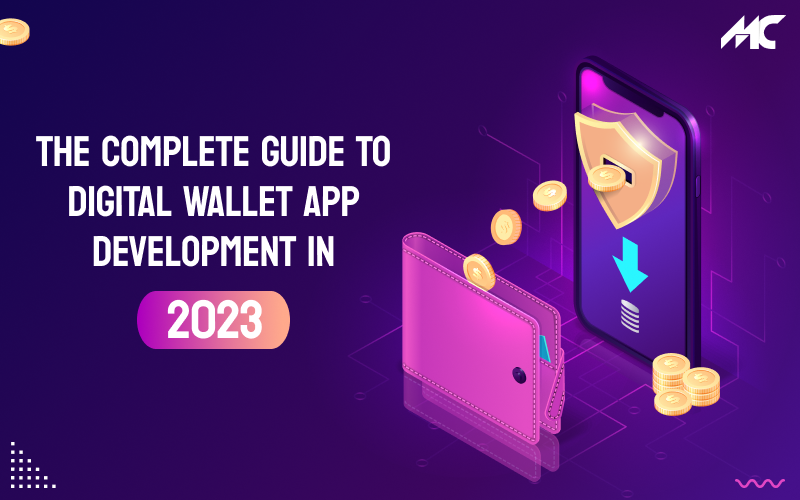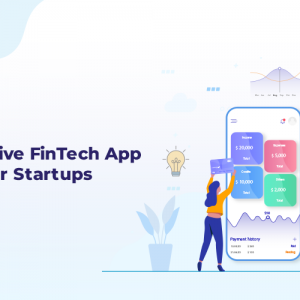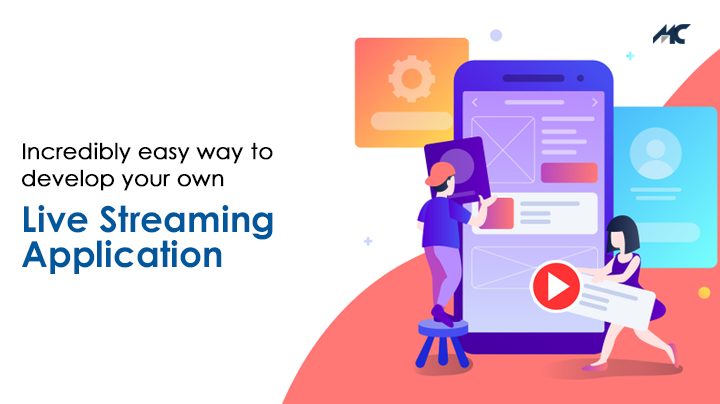Incredibly Easy Way to Develop Your Own Live Streaming Application
Gone are those days, when people used to watch live content on television. This era is dedicated to watching live-streaming videos on mobile applications. Here are some facts to get you warmed up for live streaming application :
- By 2020, live streaming is expected to account for 82% of all internet traffic. (Source: Go-Globe)
- The streaming industry is estimated to reach $124.6 billion by 2025. (Source: MediaKix)
- 88% of businesses use video as a marketing tool (an increase from 63% in 2017 & 82% in 2018)
- 64% of people aged 18-34 watch live streaming content regularly. (Source: Neil Patel)
- 47% of live streaming video viewers worldwide are watching more live videos compared to a year ago. (Source: Marketer)
These stats are the testimony to the fact that live-streaming via a mobile application has its reach out to a humongous audience.
Live-streaming is a way to broadcast all the actions or activities occurring at a particular place via a channel or an application, which can be watched by almost any individual who is having the application installed on their device.
First things first, let me tell you that the development of this type of application will cost you an arm and a leg, also, the development is no less a hot potato. So, let’s not beat around the bush and start with the steps to create your live-streaming application:
1) Identify Your Audience
Firstly, you certainly need to determine what will be your audience and what type of content they will prefer watching. For instance, there are three basic types of content for any video streaming application that are:
- Live-streaming: It is one of the most common mean to watch videos in real-time. It is recorded and broadcasted parallelly. Various streamers stream their live activities such as morning fitness exercise, gamers, culinary and much more.
- Audio-streaming: This can be described easily with the example of audiobooks that people prefer to listen to. Amazon’s audible provides this kind of streaming that you all won’t be oblivious to. Others that fall into this category are Spotify, Pandora, Apple Music and much more.
- Video-on-demand streaming: This is the streaming service that provides us the feature of series and movies that need not be downloaded, instead a user can play/pause, rewind backward or skip unwanted moments. Popular applications are Netflix, Hotstar, Prime video etcetera. Albeit, Hotstar also falls into the category of Live-streaming.
So it’s better to do the research and plan out your journey in advance to avoid pitfalls later in the process of development.
2) Get Your Product Licensed
For any type of content, you are going to make available to be watched by your customers need to get licensed and rights for example, like video-on-demand services, you need to have rights to stream and offer it to customers. You should come up with a contract with a content provider to give you a right to stream his/her content on your application. Also, you need to create terms of use and policies and let people read it and accept all the terms and conditions alongside.
3) A Reliable Hosting
It is also mandatory to ensure that your customers get an uninterrupted live-streaming video experience. To achieve it, you need to have reliable hosting. Initially, the quality of hosting need not be so imperative, but after a phase when your service becomes popular among a wide audience and imagine that a single video will be watched by a large number of users concurrently.
To ensure the same, you need to have a strong infrastructure at the server-side. A great option would be Amazon ECS which also supports docker functionality, is a highly scalable containerized application on AWS (Link: https://aws.amazon.com/ecs/). Also, I suggest you to consult or hire an experienced app development company with similar prior experience.
4) Choose CDNs
Albeit, you think that you won’t need it, just try to think ahead of time, plan out and you will probably witness that it will be a very useful option. You may need to pay additionally for Content Delivery Networks(CDNs) and it will be worth it. It will ensure faultless distribution of content without any interference. Since we also need to take it into account that the video streaming server should not crash down while responding to a million users on the go. Thus, you should identify the capability of your server.
According to google 4 out of 5 users will turn off the player if the videos stuck while loading/buffering.
Points that influence streaming performance:
- Server/user side bandwidth.
- Processor time for decoding/recoding.
- Video and Audio processing.
- Disk Space for saving.
- Processor time for downgrading the quality.
5) Choosing Best Streaming Codecs
We’re all aware of what creates movement in the videos, they are the continuous images in chronological order. These images have high-definition qualities (at least 720p, till 1080p, and 4K) which need to be compressed for their faster transfer from source to destination. So from source, these are compressed and decompressed at the destination. This is done by a device or a program called video codecs. We, now have H.265 which takes almost half of the bandwidth to deliver similar quality content that can be provided by the H.264 codec. Codecs perform various actions on the server-side, transmit the files to the user, uncompress it and send it to the screens and speakers. You can say that codecs are a general term for compression/decompression.
6) Identify Which Device Will Support Your App
We all are well aware of the fact that there are two leading operating systems in today’s world, different devices use different types of codecs. So, the server should be able to code-decode and stream video to a user in the right format.
- Web live broadcasting Applications.
- Live stream application for android: H.264 and/or VP8 media codec. The full description is given here (https://developer.android.com/guide/topics/media/media-formats.html).
- Live streaming application for iOS: H.264 and/or MPEG 4. Different devices use different codecs. So, your server should be able to decode and help a user stream video in the right format. You can read more about them here (https://developer.apple.com/documentation/).
7) Check the Average Bandwidth Speed in a County for Which You’re Going to Build Live Streaming App
Users should comply with the internet bandwidth requirements to that of streaming in order to watch videos without any latencies. The bandwidth required depends on the codecs you choose and the compression efficiencies they have. Let’s have a look at the table given below which depicts country-wise internet speed:
Source: Statista.com
Video Properties that affect the size of the file
- Stereo Audio Bitrate (from 48 to 320 Kilobitspersecond(kbps),
- Resolution (from 480×270 to 1280×720 and higher),
- Sample Rate (22,050 / 44,100 / 48,100 Hertz(Hz)),
- Bit Rate (from 150 to 2,000 Kilobitspersecond(kbps) and higher),
- Frame Rate (30 / 25 frames per second(fps)).
8) Creating Eye-balls Catching UI/UX
Considering appearance means a lot, you need to have a tempting theme with good colour combinations to please the eyes of your customers. So, you need to possess UI/UX skills or hire one leave it on us, as our designers/developers have those top-notch skills as well. UX in your application should be smooth enough so that the customers won’t face any tough time using it.
9) Add Additional Functionalities to Benefit Users
You can have additional features given below once your application becomes popular:
- You can also convert your live videos into VODs using the Cloud Recording option, so the user can rewatch them later on.
- Restricting your content to be watched in specified countries or cities can easily be done by the Geo-Blocking option.
- Analytics can be deduced to monitor a user’s interests, time spent on the application, watching specific videos, clicks on ads etcetera.
10) Develop Your Application
Finally, you have to start the development of the application, find the list of primary important tools down below that are used by the leading software development giants.
- Mobile Application: swift 4, Objective c for iOS and Kotlin/Java for android,
- Hosting: Amazon Web Services having ECS with docker for HLS, MSS, DASH, and CMAF version for live feeds,
- API server: Node.js,
- Content Delivery Network: Amazon CloudFront/Cloudflare,
- Push notifications: Firebase Notifications,
- Database: MySQL/DynamoDB,
- Media processing platform: Wowza, WebRTC, DaCast,
- Messaging: Amazon Web Services simple queue system,
- Geolocation: MapKit/Core Location (for iOS), and Google Maps (for Android).
11) Monetize Your Application
Last but not least, letting the cat out of the bag, you can make a lot of money out of this business in the long run. Find below the different types of monetization methods you can have in your application.
- Once popular, make your application paid for the new users,
- Get Subscription or membership feature in your application,
- In-app paid channels,
- In-app paid content, and
- Promotions from branded channels or brand stories.
Conclusion
Did you like what you got familiar with? So start building your live-streaming application and become the next millionaire probably better than Leading applications. Furthermore, if you want an application like that then I suggest do not hold your horses, seek out an experienced company with prior experience in this domain. The development of an application like this is the best of both the worlds in a way that choosing the right niche and monetization methods can find your way to the immense success.
-

 Mobilecoderz recognized as the Top App Development Company in Saudi Arabia by GoodFirms
Mobilecoderz recognized as the Top App Development Company in Saudi Arabia by GoodFirms -

 The Complete Guide to Digital Wallet App Development in 2023
The Complete Guide to Digital Wallet App Development in 2023 -

 Top 8 Innovative FinTech App Ideas for Startups in 2023
Top 8 Innovative FinTech App Ideas for Startups in 2023




